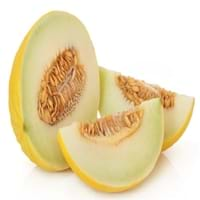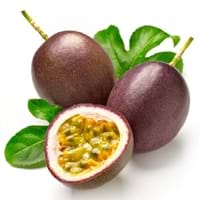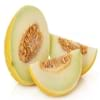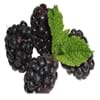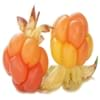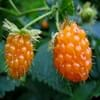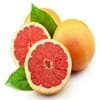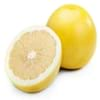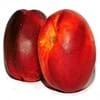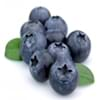Health Benefits
Body hydration, Cancer prevention, Gout treatment, Heart care, Treatment of skin Diseases
Asthma treatment, Heart care, Regulates Blood Sugar, Muscle pain relief, Reduces nervous tension
General Benefits
Body hydration, Controls blood pressure, Digestive aid, Eye care, Helps in weight loss, Improves eye vision, Maintains healthy cholesterol level, Strengthens bones
Boosts immune system, Controls blood pressure, Digestive aid, Fights against infections, Helps in weight loss
Skin Benefits
Anti-aging benefits, Brightens and lightens complexion, Hydrates skin, Reduces wrinkles, Treatment of dark spots
Anti-aging benefits, Skin revitalization
Hair Benefits
Prevents hair loss, Promotes longer and healthier hair, Protects hair
Protects hair
Allergy Symptoms
Abdominal cramps, Breathing difficulty, Coughing, Diarrhea, Hives, Hoarseness, Itching in eyes, Itching of mouth, Itching sensation in throat, Nasal congestion, Nausea, Skin rash, Wheezing
Anaphylaxis, Breathing difficulty, Decrease in blood pressure, Dizziness, Skin rash, Swelling of face, Swelling of mouth, tongue or lips
Side Effects
Allergic reaction
Stressed heart, Nausea, Vomiting, Possibly unsafe during pregnancy
Best Time to Eat
As a snack in the late afternoon, Don't consume at night and before bed, Eat the fresh ones, avoid mixing with any other foods, don't eat after meal., Morning time (before lunch)
As a snack in the late afternoon, Don't consume at night and before bed, Morning time (before lunch), Strictly avoid empty stomach
Vitamin B5 (Pantothenic Acid)
Not Available
Vitamin C (Ascorbic Acid)
Vitamin K (Phyllochinone)
Calories in Fresh Fruit with Peel
Not Available
Not Available
Calories in Fresh Fruit without Peel
Calories in Frozen Form
Not Available
Calories in Canned Form
Not Available
Season
All seasons
All seasons
Varieties
Green Flesh, Yellow Rind and Orange Flesh
Australian Purple, Common Purple, Kapoho Selection, Pratt Hybrid, University Selection No. B-74, Waimanalo Selection and Yee Selection
Color
Green, Yellow
Purple, Yellow
Inside Color
Light Green
Yellow
Origin
France
Argentina, Brazil, Paraguay
Grows on
Not Available
Not Available
Soil Type
Sandy loam, Well-drained
Sandy loam
Climatic Conditions
Warm
Frost free, Sunny, Warm
Facts about
- The average weight of honeydew melon is 6 pounds.
- 90% of a honeydew is water.
- In middle east countries, dried and roasted honeydew seeds are consumed as snacks.
- Honeydew melons can be 15-22 mm long.
- Passion fruit tree can grow up to 20 feet in a year.
- More than 200 species of passion fruit are found near Amazon river.
- Oil extracted from its seeds is used in various cosmetics.
Top Producer
China
Brazil
Other Countries
Brazil, Egypt, India, Iran, Mexico, Morocco, Spain, Turkey, United States of America
Colombia, Ecuador, Indonesia, Kenya, Peru
Top Importer
Not Available
Brazil
Top Exporter
Not Available
Ecuador
Botanical Name
Cucumis melo
Passiflora edulis
Synonym
Not Available
Passiflora edulis f. edulis or Passiflora edulis f. flavicarpa
Subkingdom
Tracheobionta
Tracheobionta
Division
Magnoliophyta
Magnoliophyta
Class
Magnoliopsida
Magnoliopsida
Subclass
Dillenhidae
Dillenhidae
Order
Cucurbitales
Malpighiales
Family
Cucurbitaceae
Passifloraceae
Species
C. melo
P. edulis
Generic Group
Gourd
Passion Flower
Difference Between Honeydew and Passionfruit
We might think that Honeydew and Passionfruit are similar with respect to nutritional value and health benefits. But the nutrient content of both fruits is different. Honeydew and Passionfruit Facts such as their taste, shape, color, and size are also distinct. The difference between Honeydew and Passionfruit is explained here.
The amount of calories in 100 gm of fresh Honeydew and Passionfruit with peel is Not Available and Not Available and the amount of calories without peel is 36.00 kcal and 97.00 kcal respectively. Thus, Honeydew and Passionfruit belong to Low Calorie Fruits and High Calorie Fruits category.These fruits might or might not differ with respect to their scientific classification. The order of Honeydew and Passionfruit is Cucurbitales and Malpighiales respectively. Honeydew belongs to Cucurbitaceae family and Passionfruit belongs to Passifloraceae family. Honeydew belongs to Cucumis genus of C. melo species and Passionfruit belongs to Passiflora genus of P. edulis species. Beings plants, both fruits belong to Plantae Kingdom.
